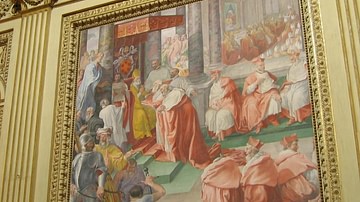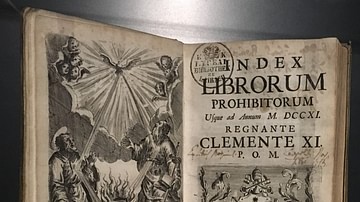Review

| Rating: | |
|---|---|
| Title: | The Inner Life of Catholic Reform: From the Council of Trent to the Enlightenment |
| Author: | Ulrich L. Lehner |
| Audience: | University |
| Difficulty: | Hard |
| Publisher: | Oxford University Press |
| Published: | 2022 |
| Pages: | 312 |
Ulrich Lehner’s book successfully addresses the historiographical gaps of the Catholic Enlightenment from the lenses of theology and history. Due to its brevity, topics like controversies that shook Catholicism as well as early modern authors and works, information about popes, and religious orders are left out, giving readers the room to simultaneously explore other books on these topics. Lehner's book is ideal for undergraduate and graduate students of history, philosophy, and theology.
Ulrich Lehner’s The Inner Life of Catholic Reform: From the Council of Trent to the Enlightenment came into fruition after Lehner published several works on the Catholic Enlightenment, which he defines as a “variety of actors within the fold of Catholicism united by their engagement, in one way or another, with Enlightenment culture for the sake of ecclesial and societal reform” (i). While there is an abundance of historiographical research on the Catholic Enlightenment, most works on the Counter-Reformation during the 16th and 17th centuries never defined the implementation and denotation of "reform." This book addresses this historiographical gap by providing readers a longue durée history of Catholicism from the Council of Trent to the Enlightenment. The manuscript is organized into ten chapters, with each chapter focusing on a different aspect of Catholicism, ordained and lay, and how the Enlightenment reformers pushed for more activity from its believers.
Chapters One through Four focus on the reformation of the ordained positions of the Catholic Church and how they intend to modernize and keep up with the early modern world. One of the major reform movements was to have the leaders of the Church encourage its followers rather than coerce them into believing. Ways to combat this include regulating homilies, pushing for formal education of the faith, and basing one of the pillars of the church around the nuclear family, which is introduced in chapter five.
Chapters Five through Ten shift the focus to the laypersons and how secular movements encouraged the Catholic Church to reform. Chapter Five begins the discussion on the Catholic lay population. By allowing members of the Church free will, they avoided “mortal sin and spiritual homicide” (66). Like the Enlightenment, Counter-Reformation movements called for peer review and streamlining. One example of this is in Chapter Eight, where heresy was rooted out “due to a number of cases of false mysticism, questionable morals, and unusual or heterodox expressions of piety, teachers of prayer techniques were often suspected of heresy” (110). Other topics that were discussed include confraternities, eucharist and confession, prayer, symbols and images, and the usage of Mary and Joseph as images of hope. Throughout the early modern period, reformers pushed for more frequent participation in worship and other ways to demonstrate one’s faith through tools such as the scapular and rosary.
The conclusion calls on historians of Catholicism to “not underestimate how widespread knowledge of prayer techniques was, albeit the intensity and quality of this knowledge certainly varied greatly” (163). Much of theological history focuses on the reform movements that can be viewed externally. However, Lehner argues that to completely understand them, historians need to engage with sources that rely more on spiritual approaches. Lehner engages with sources in English, French, Spanish, Italian, and German, giving the text a wide range of European perspectives from the early modern period. As for the types of source materials, Lehner analyzes religious texts such as the Holy Scripture, which is then filtered through homilies, prayer books, the arrangement of psalms in the breviary, and art. While the primary focus of the text is on continental Europe, there are references to missions in the Americas and East Asia.
Lehner’s book successfully addresses the historiographical gaps of the Catholic Enlightenment from the lenses of theology and history. Due to its brevity, topics such as controversies that shook Catholicism as well as early modern authors and works, information about popes, and religious orders are left out. This gives readers space to simultaneously study Lehner's book with other scholarship on these topics. This book is ideal for undergraduate and graduate students of history, philosophy, and theology as well as those who are interested in learning more about the history of the Catholic Church during the early modern period.
Cite This Work
APA Style
Clapper, K. S. (2023, February 06). The Inner Life of Catholic Reform: From the Council of Trent to the Enlightenment. World History Encyclopedia. Retrieved from https://www.worldhistory.org/review/332/the-inner-life-of-catholic-reform-from-the-council/
Chicago Style
Clapper, Kyra Sanchez. "The Inner Life of Catholic Reform: From the Council of Trent to the Enlightenment." World History Encyclopedia. Last modified February 06, 2023. https://www.worldhistory.org/review/332/the-inner-life-of-catholic-reform-from-the-council/.
MLA Style
Clapper, Kyra Sanchez. "The Inner Life of Catholic Reform: From the Council of Trent to the Enlightenment." World History Encyclopedia. World History Encyclopedia, 06 Feb 2023. Web. 11 Apr 2025.




